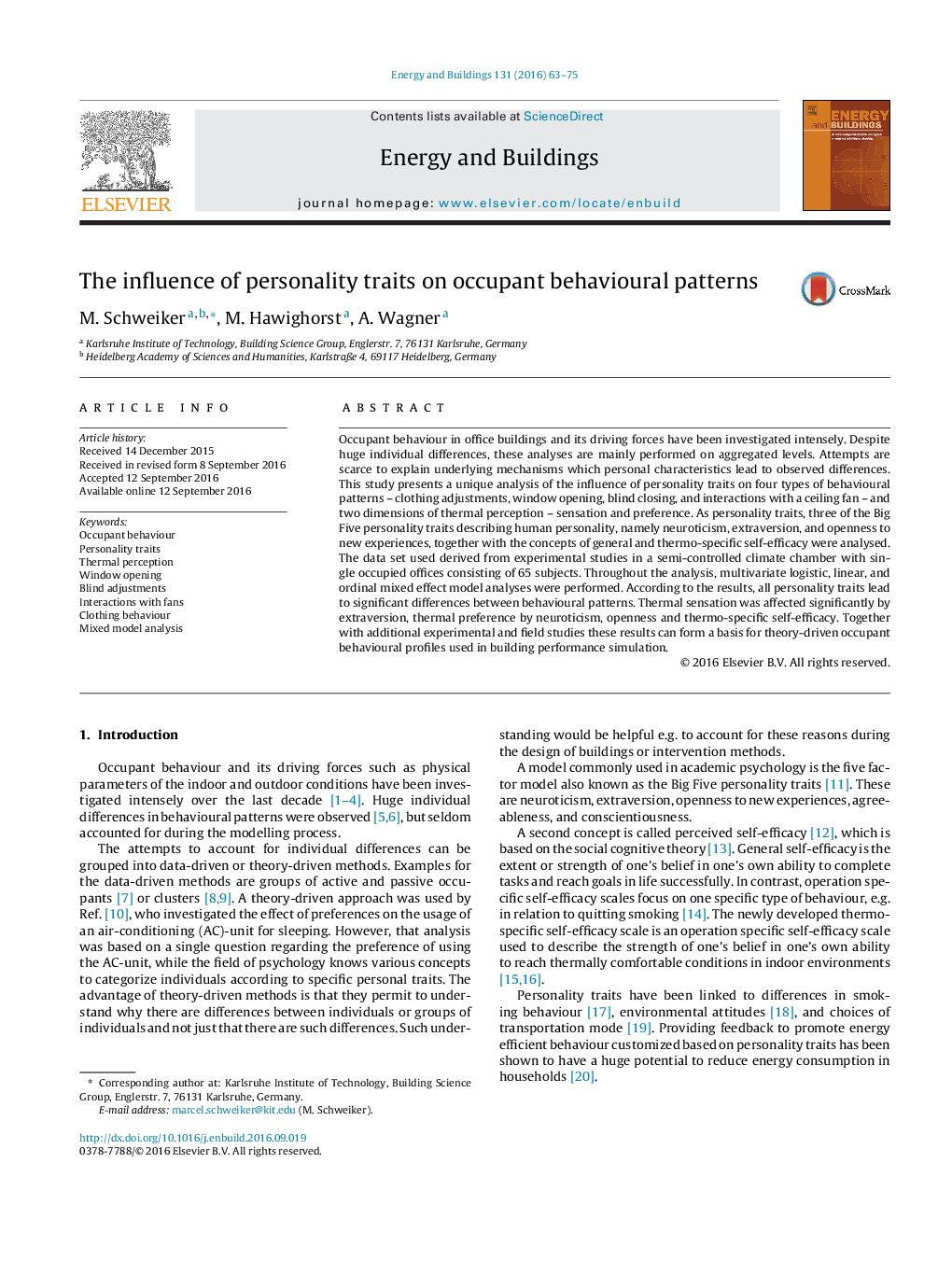| Article ID | Journal | Published Year | Pages | File Type |
|---|---|---|---|---|
| 4914285 | Energy and Buildings | 2016 | 13 Pages |
Abstract
Occupant behaviour in office buildings and its driving forces have been investigated intensely. Despite huge individual differences, these analyses are mainly performed on aggregated levels. Attempts are scarce to explain underlying mechanisms which personal characteristics lead to observed differences. This study presents a unique analysis of the influence of personality traits on four types of behavioural patterns - clothing adjustments, window opening, blind closing, and interactions with a ceiling fan - and two dimensions of thermal perception - sensation and preference. As personality traits, three of the Big Five personality traits describing human personality, namely neuroticism, extraversion, and openness to new experiences, together with the concepts of general and thermo-specific self-efficacy were analysed. The data set used derived from experimental studies in a semi-controlled climate chamber with single occupied offices consisting of 65 subjects. Throughout the analysis, multivariate logistic, linear, and ordinal mixed effect model analyses were performed. According to the results, all personality traits lead to significant differences between behavioural patterns. Thermal sensation was affected significantly by extraversion, thermal preference by neuroticism, openness and thermo-specific self-efficacy. Together with additional experimental and field studies these results can form a basis for theory-driven occupant behavioural profiles used in building performance simulation.
Related Topics
Physical Sciences and Engineering
Energy
Renewable Energy, Sustainability and the Environment
Authors
M. Schweiker, M. Hawighorst, A. Wagner,
